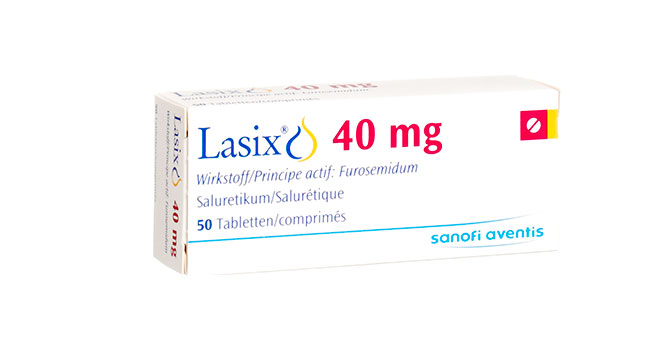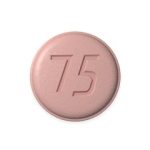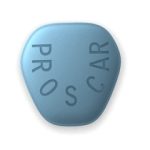Lasix (Furosemide) 40 mg
Buy Lasix (Furosemide) online
You can save money by buying Lasix (Furosemide) online. Large selection of inexpensive antihypertensive drugs in a reliable online pharmacy! Take advantage of an additional 15% discount: online pharmacy ᐅ
There are different diuretic drugs available on the market – Lasix, Furosemide – each with a different set of ingredients and therefore used to treat different conditions. For example, thiazides are used to treat high blood pressure and edema in cases of heart failure. On the other hand, loop diuretics are helpful when people have symptoms of congestive heart failure. They are mainly used in emergencies.
However, loop diuretics lower blood pressure levels. There is another class of diuretics called potassium-sparing diuretics that help the body maintain potassium levels. They are also used in patients with symptoms of congestive heart failure.
Furosemide prevents the absorption of sodium, chlorides, and water filtered from the fluid into the renal tubules, causing a significant increase in diuresis. The onset of action after oral administration occurs within an hour, sometimes suddenly, and lasts about 5-8 hours. The action after the injection occurs faster – after 10 minutes, and diuresis persists for 2-3 hours. The diuretic action of furosemide can destroy sodium chloride and other minerals in the body. Therefore, during treatment, careful medical supervision is necessary.
Buy Lasix without a prescription
Buy Lasix (Furosemide) 40 mg without a prescription ᐅ
Lasix is a powerful diuretic used to treat severe body edema resulting from heart failure, liver cirrhosis, chronic kidney disease, and nephrotic syndrome. It is usually used alone or in combination with other high blood pressure pills.
Furosemide 40 mg
Furosemide 40 mg causes a strong but short-lived diuresis. Blocks the reabsorption of sodium and chloride ions in the proximal and distal parts of the renal tubules. Furosemide 40 mg has a pronounced diuretic effect.
In heart failure, furosemide rapidly reduces preload on the heart by dilating the veins, reducing pulmonary artery pressure, and lowering left ventricular filling pressure. It has an antihypertensive effect by increasing the excretion of sodium chloride and reducing the response of vascular smooth muscles to vasoconstrictive effects and as a result of a decrease in circulating blood volume.
After ingestion of 40 mg of furosemide, the diuretic effect begins after 60 minutes and lasts about 3-6 hours. During the period of action, the excretion of sodium ions increases significantly, but after its completion, the excretion rate decreases below the initial level.
Indications for use Furosemide 40 mg:
- chronic heart failure;
- chronic renal failure;
- nephrotic syndrome;
- liver disease;
- high blood pressure.
Pills should be taken on an empty stomach, without chewing and drinking plenty of liquid. When prescribing furosemide, it is recommended to use its smallest doses sufficient to achieve the desired effect. The maximum daily dose for adults is 1500 mg. The duration of treatment is determined by the doctor individually, depending on the indications. The initial dose is 40-80 mg/day. The required dose is selected depending on the diuretic reaction. The daily dose is recommended to be divided into 2-3 doses.
Furosemide can be used alone or in combination with other antihypertensive agents. The usual maintenance dose is 20 to 40 mg/day. When adding furosemide to already prescribed drugs, their dose should be reduced by 2 times. With an increase in blood pressure associated with chronic renal failure, higher doses of the drug may be required.
The usual initial oral dose for the treatment of edema is 40–80 mg once. The same dose or an increased dose may be administered 6 to 8 hours later. Doses of Lasix can be increased by 40 mg every 6 to 8 hours until the desired effect is achieved. A successful dose may be administered once or twice a day. Some people may need 600 mg per day. The initial oral dose for children is 2 mg/kg. The initial dose can be increased by 1–2 mg/kg every 6 hours until the desired effect is achieved. Doses above 6 mg/kg are not recommended. The recommended dose for the treatment of arterial hypertension is 40 mg 2 times a day.
Diuretics: indications and side effects
Using Lasix with aminoglycoside antibiotics (such as gentamicin) or ethacrynic acid may cause hearing loss. The simultaneous use of furosemide and aspirin can lead to an increase in the level of aspirin in the blood and aspirin toxicity. Furosemide can also reduce the excretion of lithium by the kidneys, leading to elevated lithium levels and possible side effects. Sucralfate (Karafate) reduces the level of furosemide by binding in the intestines and stopping its absorption into the body. Reception of Lasix and Sucralfate should be separated with a minimum interval of two hours. Furosemide is excreted in breast milk. Nursing mothers should avoid taking furosemide.
You should not use this medicine if you are allergic to sulfa drugs, have signs of dehydration, or have liver disease. Diuretics are not indicated for high blood pressure during pregnancy. Do not take this medicine if you are breastfeeding as a single dose of 40 mg may be enough to block lactation. Breastfeeding is not compatible with Lasix treatment. Furosemide may give positive results in doping tests, which should be considered by athletes.
Furosemide lowers blood potassium levels and may increase uric acid and sugar levels. Therefore, during treatment, it is recommended to take regular blood tests.
The diuretic effect is powerful, especially in the first days of treatment, and sometimes even sudden. It is not recommended to take Lasix at night.













